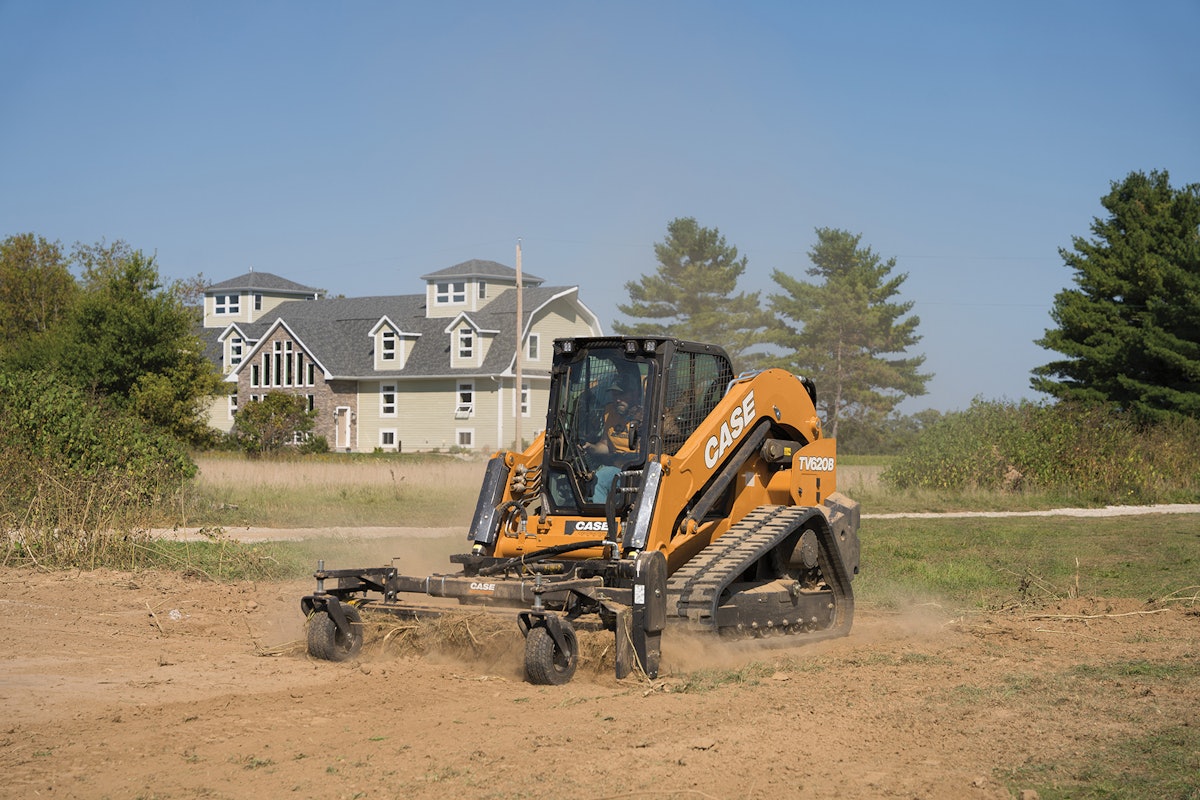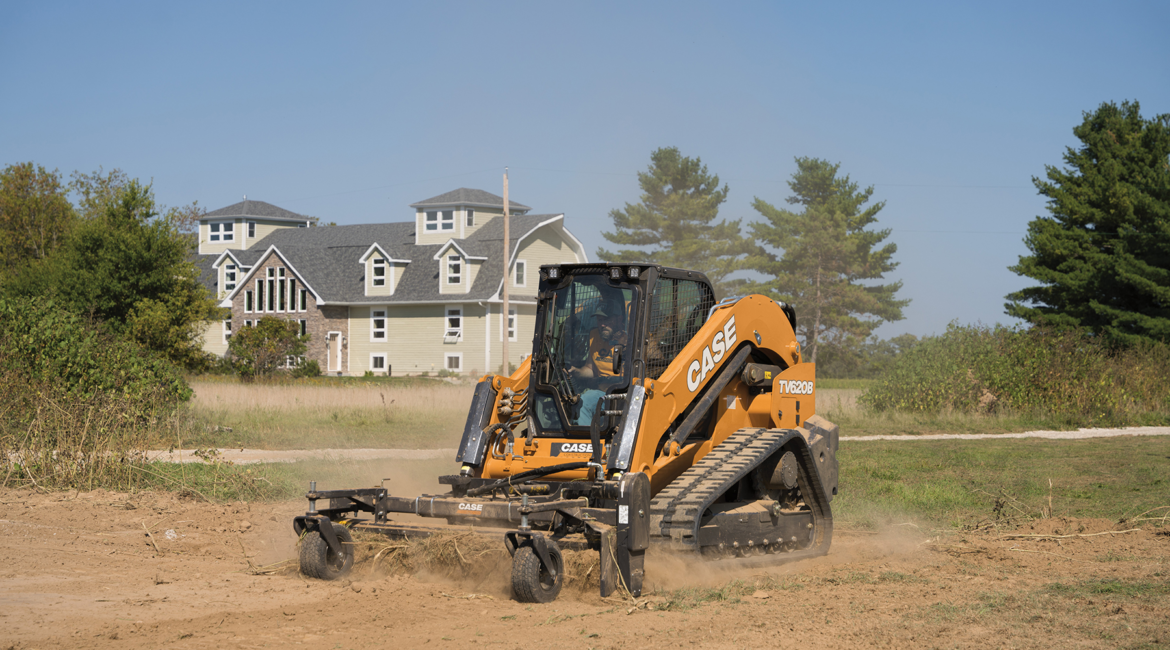What’s the 411 on compact skid steer hydraulics? If you’re curious about how these hydraulic systems work, you’ve come to the right place! In this article, we’ll break it down into bite-sized pieces, making it easy for you to understand.
First things first, let’s talk about what a compact skid steer is. It’s a small construction vehicle with a rigid frame and lift arms that can be fitted with various attachments. One of the key components of a skid steer is its hydraulic system, which is responsible for powering and controlling the attachments.
Now, you might be wondering, what exactly do hydraulics do? Well, hydraulics use fluid to transmit power from one point to another. In the case of compact skid steer hydraulics, they enable the machine to lift heavy loads, operate attachments like buckets and forks, and even drive the wheels or tracks.
So, whether you’re interested in the inner workings of compact skid steer hydraulics or just want to expand your knowledge, this article will give you the lowdown on everything you need to know. Let’s dive in and uncover the mysteries behind these incredible hydraulic systems!

What’s the 411 on compact skid steer hydraulics?
Compact skid steer hydraulics play a crucial role in the operation and functionality of these versatile machines. Understanding how hydraulics work in compact skid steers is essential for anyone operating or considering investing in one of these powerful tools. In this article, we’ll delve into the world of compact skid steer hydraulics, exploring the basics, benefits, and tips for maintaining and optimizing their performance.
The Basics of Compact Skid Steer Hydraulics
Compact skid steer hydraulics use pressurized fluid to transmit power, control movement, and operate various attachments. Hydraulic systems consist of a pump, valves, hydraulic fluid, cylinders, and hoses. The pump sucks in fluid from a reservoir and pushes it through the system to create hydraulic pressure. Valves control the flow and direction of the fluid, while cylinders convert the pressure into mechanical force to move the machine and its attachments.
Compact skid steer hydraulics are typically operated using foot pedals or joystick controls, allowing operators to precisely maneuver the machine with ease. These hydraulics enable the skid steer to perform a wide range of tasks, from digging and lifting to sweeping and grading. The versatility and power of compact skid steer hydraulics make them a popular choice in construction, landscaping, agriculture, and many other industries.
One of the key advantages of compact skid steer hydraulics is their ability to provide high torque and breakout force. This allows the machine to handle heavy loads and work in challenging conditions. Additionally, the precise control offered by hydraulic systems enhances safety and productivity on the job site.
The Benefits of Compact Skid Steer Hydraulics
Compact skid steer hydraulics offer several benefits that make these machines indispensable for various applications. Here are some of the advantages:
- Power and Versatility: Compact skid steer hydraulics provide impressive power and versatility, allowing operators to tackle a wide range of tasks efficiently. From digging trenches and hauling materials to sweeping and mowing, these hydraulics enable the skid steer to adapt to different requirements on the job site.
- Time and Labor Savings: With the ability to operate numerous attachments, compact skid steer hydraulics help save time and reduce labor costs. Switching between attachments is quick and straightforward, increasing productivity and minimizing downtime.
- Maneuverability: Compact skid steers are renowned for their exceptional maneuverability, and hydraulics play a vital role in this aspect. The precise control offered by hydraulics allows operators to navigate tight spaces, making these machines perfect for urban environments or confined job sites.
- Operator Comfort: Compact skid steer hydraulics are designed for ease of use, providing operators with ergonomic controls that reduce fatigue and improve comfort during long work hours. The smooth operation and responsive controls enhance operator productivity and satisfaction.
By leveraging the power and versatility of compact skid steer hydraulics, operators can accomplish more in less time while ensuring optimal results.
Tips for Maintaining and Optimizing Compact Skid Steer Hydraulics
To ensure the longevity and performance of compact skid steer hydraulics, regular maintenance and proper operation are essential. Here are some tips to help you maintain and optimize your skid steer’s hydraulics:
- Follow Manufacturer Guidelines: Always refer to the manufacturer’s guidelines and recommendations for maintenance and operation. These guidelines provide specific instructions on fluid types, change intervals, and other essential factors for optimal hydraulic system performance.
- Monitor Fluid Levels and Quality: Check hydraulic fluid levels regularly and ensure they are within the recommended range. Also, inspect the fluid for any signs of contamination, such as water or debris. Contaminated fluid can damage the system components and affect performance.
- Inspect Hoses and Connections: Regularly inspect hydraulic hoses and connections for any signs of leaks, cracks, or loose fittings. Address any issues immediately to prevent further damage and maintain the integrity of the hydraulic system.
- Clean Attachments and Components: Keep attachments and hydraulic components clean and free from debris and buildup. This helps prevent clogs and ensures smooth operation. Use the appropriate cleaning methods and avoid using harsh chemicals that could damage the system.
- Train Operators: Properly train skid steer operators on the correct operation of the hydraulic system. This includes understanding the controls, using attachments correctly, and practicing safe operating procedures. Operator negligence or misuse can lead to hydraulic system damage or accidents.
By following these maintenance tips and operating practices, you can optimize the performance and lifespan of your compact skid steer hydraulics, ensuring they continue to deliver reliable power and efficiency.
Different Types of Compact Skid Steer Hydraulics
Introduction: When it comes to compact skid steer hydraulics, there are various types and configurations available to suit different applications and preferences. Understanding the different types can help you make an informed decision when selecting a machine or attachment. In this section, we’ll explore some common types of compact skid steer hydraulics and their unique features and benefits.
Comparison of Compact Skid Steer Hydraulics Brands
Introduction: With numerous brands manufacturing compact skid steer hydraulics, it can be challenging to determine which one is the best fit for your needs. In this section, we’ll compare some popular brands of compact skid steer hydraulics, examining their features, performance, and reputation in the industry. This information can help you make an educated decision when selecting a brand for your skid steer or attachment.
Key Considerations for Choosing Compact Skid Steer Hydraulics
Introduction: Selecting the right compact skid steer hydraulics is crucial to ensure optimal performance, productivity, and safety on the job site. In this section, we’ll discuss some key considerations to keep in mind when choosing hydraulics for your skid steer. By understanding these factors, you can make an informed decision and select the hydraulics that best suit your specific needs and applications.
Key Takeaways: What’s the 411 on compact skid steer hydraulics?
- Compact skid steer hydraulics are the systems that power various attachments on small construction machines.
- These systems use hydraulic fluid to generate the necessary force and power for lifting, pushing, and digging.
- Understanding the basics of hydraulic systems is essential for operating and maintaining compact skid steer machines.
- Regular maintenance, including checking fluid levels and filters, is crucial for keeping the hydraulics working efficiently.
- Skilled operators can maximize the performance of compact skid steer hydraulics, increasing productivity and minimizing downtime.
Frequently Asked Questions
Here are some commonly asked questions about compact skid steer hydraulics:
1. How do compact skid steer hydraulics work?
Compact skid steer hydraulics use fluid power to transmit force and motion to operate various attachments. The hydraulic system consists of three main components: a hydraulic pump, hydraulic fluid, and hydraulic cylinders. The pump draws in hydraulic fluid and pressurizes it, which is then directed to the hydraulic cylinders. When the operator activates the controls, the pressurized fluid forces the cylinders to extend or retract, allowing the equipment to perform tasks such as lifting, pushing, and digging.
Compact skid steer hydraulics are highly efficient and allow for precise control over the equipment’s movements. The system’s versatility makes it suitable for a wide range of applications, including construction, landscaping, and agriculture.
2. What are the advantages of using compact skid steer hydraulics?
Compact skid steer hydraulics offer several advantages over other power transmission methods. Firstly, they provide excellent versatility and maneuverability, allowing the equipment to operate in tight spaces and navigate uneven terrain. The hydraulic system also offers precise and responsive control, enabling operators to perform tasks with accuracy and efficiency.
Another advantage is the ability to easily switch between multiple attachments, making the equipment highly adaptable for various job requirements. Additionally, compact skid steer hydraulics are known for their durability and robustness, withstanding the demands of heavy-duty applications. Overall, these hydraulics enhance productivity and reduce manual labor, making them a preferred choice in many industries.
3. How should I maintain compact skid steer hydraulics?
Maintaining compact skid steer hydraulics is crucial for optimal performance and longevity. Regularly check the hydraulic fluid level and quality, ensuring it meets the manufacturer’s specifications. Contaminated or insufficient fluid can cause damage to the system components.
Inspect hydraulic hoses and fittings for leaks or damage, and replace any damaged parts immediately. Additionally, keep the hydraulic system clean and free of debris, as foreign particles can cause clogs and affect performance. It’s also important to follow the manufacturer’s recommended maintenance schedule, including regular filter changes and system flushes.
4. Are compact skid steer hydraulics compatible with different attachments?
Yes, compact skid steer hydraulics are designed to be compatible with a wide range of attachments. The hydraulic system utilizes quick-connect couplers that allow for easy and efficient attachment changes. Whether you need to switch from a bucket to a grapple or a broom to a trencher, the hydraulic system can accommodate various attachments with minimal downtime.
However, it’s essential to ensure that the hydraulic flow and pressure requirements of the attachment match the capabilities of the skid steer’s hydraulic system. Consult the equipment’s manual or the manufacturer for specific compatibility guidelines to avoid potential damage or inefficiency.
5. Can I operate compact skid steer hydraulics without specialized training?
While compact skid steer hydraulics are designed for user-friendly operation, it is still essential to have proper training before operating the equipment. Hydraulic systems involve significant forces and pressures, and understanding their operation and safety protocols is crucial to prevent accidents and equipment damage.
Training programs are available that cover the basics of compact skid steer hydraulics, including safety procedures, equipment controls, and maintenance requirements. It is highly recommended to undergo such training to ensure you have the knowledge and skills needed to operate the equipment safely and efficiently.
Summary
Compact skid steer hydraulics are important for controlling attachments and making machines more versatile. They have pumps, valves, and hoses that work together to power and operate various tools. These hydraulics help with digging, pushing, lifting, and other tasks, making work easier and more efficient. It is essential to understand how the hydraulics function and maintain them properly for optimal performance and safety.
Having a grasp of the basics of compact skid steer hydraulics is crucial for users. This knowledge allows for better control over attachments, increased productivity, and safer operations. Regular maintenance and inspection are also essential to keep the hydraulic system in good working condition. Overall, understanding and caring for compact skid steer hydraulics play a key role in getting the most out of these machines.

